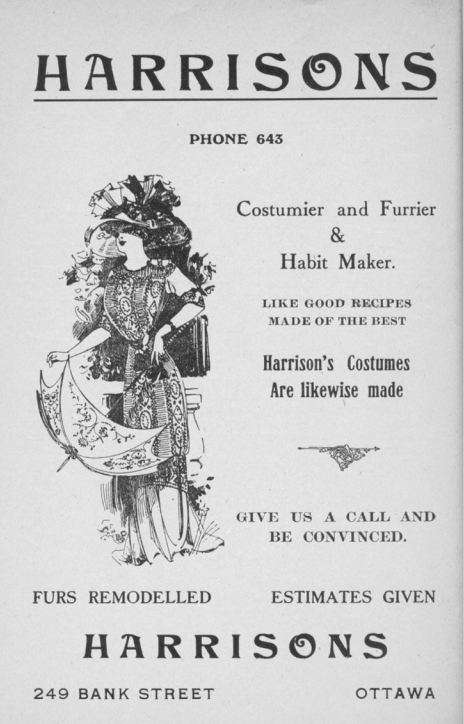Reported by Owen Cooke in the RTHS newsletter, May, 2008.
During the winter, Mary Davidson, a long-time volunteer with the Archives, donated a number of heritage cookbooks for our collection. Included was a very interesting, early local cookbook, which over the years has lost its cover, title page and any evidence of its date or why it was published. However, it is possible to say something about the book from internal evidence.

The text, only 72 pages, appears to be complete. The book may have been intended to be given out free as publicity, because advertising is very prominent throughout. At the head of every page is “NOTICE: If your Grocer and Butcher use Toledo Computing Scales” and at the foot of every page is “USE BLUE RIBBON TEA”.
There are a number of full-page advertisements from firms in Ottawa and Montreal, but the Ottawa pages are concentrated at the back of the book, suggesting that the book may be an Ottawa edition of what was originally a Montreal imprint.
The women’s styles in the advertisements suggest that the book must have been published no later than about 1900. The telephone numbers in the Ottawa advertisements are three digits only, and those from Montreal are either three or four digits. Here are two of the interesting advertisements from the cookbook.
Let us conclude with some sage advice the book gives us on carving for dinner with guests. Perhaps the language has changed a bit, but we can still learn from this:

“Carving is one important acquisition in the routine of daily living, and all should try to attain a knowledge or ability to do it well, and withal gracefully. When carving use a chair slightly higher than the ordinary size, as it gives a better purchase on the meat, and appears more graceful than when standing, as is often quite necessary when carving a turkey, or a very large joint. More depends on skill than strength. The platter should be placed opposite, and sufficiently near to give perfect command of the article to be carved, the knife of medium size, sharp with a keen edge. Commence by cutting the slices thin, laying them carefully to one side of the platter, then afterwards placing the desired amount on each guest’s plate, to be served in turn by the servant.
Gravies should be sent to the table very hot, and in helping one to gravy or melted butter, place it on a vacant side of the plate, not pour it over their meat, fish or fowl, that they may use only as much as they like."
